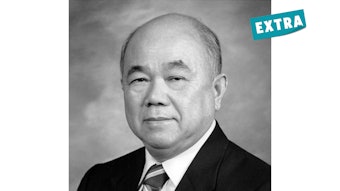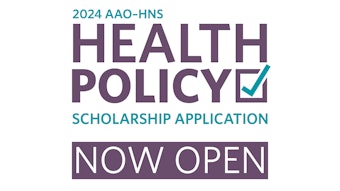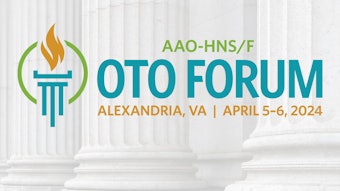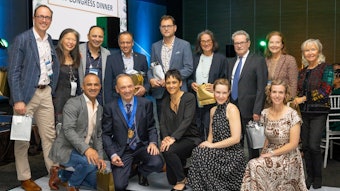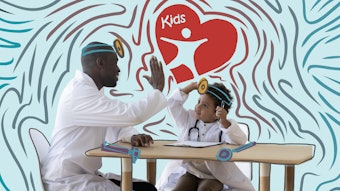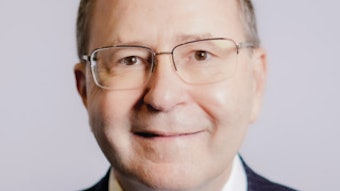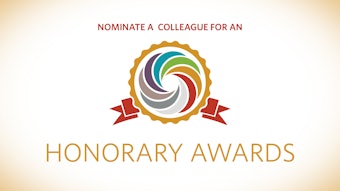Sensorineural Hearing Loss in Children: The First Visit with Caregivers
Find answers to common questions posed by parents during visits with an otolaryngologist regarding their child’s hearing loss.
Samantha Anne, MD, MS, Dan Choo, MD, Michael Cohen, MD, Margaret A. Kenna, MD, MPH, and Judith E. C. Lieu, MD, MSPH
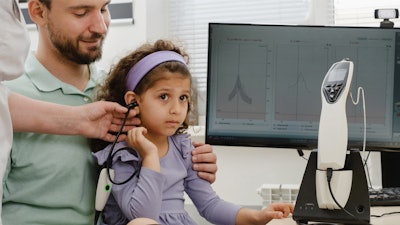
On an initial visit, parents often wonder why their child has hearing loss and whether they caused it. The evaluation of a child with sensorineural hearing loss (SNHL) has evolved significantly over the years, as access to extensive molecular genetic testing modalities has improved, screenings for congenital infections have become more common (e.g., congenital cytomegalovirus infection), and safer, higher resolution imaging have all come into common clinical practice. However, the fundamentals of starting with a thorough history and physical exam remain a requisite starting point in the process. The history should include questions about the prenatal health of the mother and course of the pregnancy. Perinatal factors such as NICU stay, hypoxemia, prolonged mechanical ventilation, hyperbilirubinemia, exposure to ototoxic medications (e.g., Gentamicin), low birth weight—all factors associated with previous high-risk registries—should still be assessed for possible causality in pediatric SNHL.5 Obtaining a detailed family history is even more important as 50% or more of early onset SNHL have a hereditary/genetic basis.
Moving on to the physical exam, pediatric SNHL often happens in the context of syndromic processes (e.g., neurofibromatosis, Usher syndrome, Waardenburg syndrome, branchio-oto-renal syndrome). In such cases, a thorough physical exam can often identify features that will lead to efficient, targeted testing and diagnosis. A comprehensive audiologic evaluation of a child with SNHL is one of the key starting points in this process. In early infancy, auditory brainstem response (ABR) testing remains the gold standard in physiologic assessment of the auditory system. Common practice routinely includes at least two ABRs to confirm a SNHL with subsequent behavioral testing to correlate hearing threshold with ABR responses. The inclusion of otoacoustic emissions is common and helpful in determining the function of cochlear outer hair cells and the possible diagnosis of auditory neuropathy/dyssynchrony spectrum disorders.
Once a diagnosis of SNHL is obtained, genetic testing for specific DNA variants associated with hearing loss is the highest yield diagnostic tool for clinicians. For children with congenital or childhood-onset bilateral SNHL, up to 50% have a genetic etiology; for children with unilateral SNHL, up to 19% may be genetic.7 Among children with genetic hearing loss, about 70% are non-syndromic; and of the non-syndromic hearing losses, up to 75% are recessive. Young children with syndromic hearing loss may initially present as seemingly non-syndromic, with hearing loss as the first symptom (“syndromic mimics”). If a child presents with obvious features of a particular syndrome, then initial genetic testing could start with single or focused genetic testing (e.g., EYA1, SIX1 and SIX5 for branchio-oto-renal syndrome). Alternatively, and especially if there are no obvious syndromic features, broad sequencing using a commercial gene panel for up to 150 hearing loss genes (which includes both non-syndromic and syndromic genes) is a good place to start.
Families often question whether siblings should be tested or if their future children will also be diagnosed with SNHL. Genetic testing may be considered to identify a definitive diagnosis in the patient for future family planning, to help other family members with hearing loss, and to potentially become candidates for gene therapy. Genetic testing for hearing loss genes can be considered at any stage of life. Many standard prenatal tests (i.e., testing parents before they become pregnant, or once they are pregnant) now include common hearing loss genes. In utero testing includes chorionic villous sampling and amniocentesis. Postnatally, genetic testing of cord blood, or using saliva or blood from the baby, is standard. Otolaryngologists who pursue genetic testing in their patients should work closely with a genetic counselor or clinical geneticist. Notably, as the field continues to progress, these tests will become more comprehensive with higher rates of diagnostic yield. The ability to perform these tests via cheek swab also mitigates concerns and hesitancies for many patients and their families.
Further evaluation can include imaging, electrocardiograms (ECG), additional consults, and lab tests.6 Imaging of the inner ear and brain also represent a core diagnostic component. Non-contrast enhanced, magnetic resonance imaging has replaced computed tomography in most centers as the initial study of choice owing to the elimination of exposure to ionizing radiation, outstanding visualization of the inner ear and brain, as well as superior assessment of key structures such as the cochlear nerve. Additional tests such as salivary, serum or urine assays for cytomegalovirus infection are often included if feasible in the proper timeframe (i.e., within the first three weeks after birth).
ECGs remain in the test battery for some centers to rule out the rare possibility of a prolonged QT syndrome (Jervell and Lange-Nielsen syndrome) that can catastrophically present with sudden cardiac death if not diagnosed. Additional laboratory testing (e.g., renal function panels to look for Alport’s syndrome) are often ordered based on history and physical examination, other clinical indicators or suspicion, positive or inconclusive genetic testing. Ophthalmologic consultations are commonly obtained owing to the frequency of commonly associated conditions, such as myopia, in children with SNHL as well as the more concerning risk of retinitis pigmentosa in patients with Usher syndrome.
A significant parental concern with a new diagnosis of SNHL is whether anything can be done to help their child’s hearing, and whether there will be developmental delays, including with speech and language. It is important to inform families that management options may encompass speech and auditory rehabilitative services, classroom accommodations, and amplification. Children under three years of age should be referred for early intervention services, which are provided at free or reduced cost for all eligible children in every state through the federal Individuals with Disabilities Act (IDEA). Services provided by early intervention can be augmented by additional professionals, such as speech-language pathologists and teachers of the deaf. Referral to these specialists is appropriate at the time of diagnosis. After age three, children receiving early intervention services are typically transitioned to receive services through their local school district and through IDEA. This transition process should be initiated early enough to allow for a smooth transition without gaps in care.
In the classroom environment, appropriate accommodations are dependent upon class size, physical environment, and educational style.6 Measures to optimize the acoustic environment can be particularly helpful for children with hearing loss. Hearing assistive technology (HAT) systems, including Bluetooth and FM systems, increase the signal-to-noise ratio of the teacher and are recommended for children with hearing loss. Such systems may function via a speaker in the classroom, streaming to an ear level device, or streaming into a conventional hearing aid, bone conduction device, or cochlear implant. Consultation by a teacher of the deaf or educational audiologist should be requested to evaluate and optimize the classroom acoustically, educate classroom staff on optimal strategies for teaching children with hearing loss, and to recommend and manage HAT systems when appropriate.
Discussion of hearing rehabilitation options with families can reassure parents that their child has options to help with the hearing loss. For many children with SNHL, amplification with a traditional hearing aid is an important therapeutic modality. Hearing aids should be fitted as early as possible by an audiologist experienced in working with children, and should be periodically assessed for good fit, function, and programming. Bone conduction hearing devices should be considered for children that are poor anatomic candidates for hearing aids, such as those with ear canal stenosis or chronically draining ears. Contralateral routing of sound technologies, including external and implanted bone conduction devices and Bluetooth devices, can be considered for children with single-sided deafness who are not good anatomical candidates for cochlear implantation. Cochlear implantation should be considered for children with severe to profound SNHL who are good anatomical candidates. Cochlear implant candidates should be assessed by a team with experience in cochlear implantation in children. It is important to test children with SNHL regularly to assess for hearing loss progression and to perform word recognition testing when age appropriate.
Taken together, a new diagnosis of SNHL in their child can be distressing to caregivers. Counseling provides information, emotional support, and an actionable plan for families. The means for evaluating pediatric patients with SNHL has evolved dramatically over the past decade and will continue to evolve rapidly as the understanding of molecular genetics and technology for testing continue to advance and improve. As novel therapies for deafness emerge in the coming years, this enhanced understanding of the molecular biologic mechanisms underlying our patients’ hearing loss will become even more critical. Genetic therapy is no longer theoretical; the first clinical trial for a non-syndromic hearing loss gene, OTOF, has been approved by the U.S. Food and Drug Administration and is enrolling at several pediatric centers in the United States and internationally. Trials for other genes will likely follow. Discussion of management options can include speech and auditory rehabilitative services, classroom accommodations, and amplification.
References
- Centers for Disease Control and Prevention. "Data and statistics about hearing loss in children." Accessed December 16, 2023, https://www.cdc.gov/ncbddd/hearingloss/data.html.
- Gunjawate, Dhanshree R., Rohit Ravi, and Carlie Driscoll. "Stress among parents of children with hearing loss and how they deal with it: A systematic review." International Archives of Otorhinolaryngology 27, no. 01 (2022): e166-e177.
- Fitzpatrick, Elizabeth, Doug Angus, Andrée Durieux-Smith, Ian D. Graham, and Doug Coyle. "Parents’ needs following identification of childhood hearing loss." (2008).
- Fitzpatrick, Elizabeth, Doug Coyle, Isabelle Gaboury, Andrée Durieux-Smith, JoAnne Whittingham, Viviane Grandpierre, Eunjung Na, and Mina Salamatmanesh. "Service preferences of parents of children with mild bilateral or unilateral hearing loss: A conjoint analysis study." Ear and Hearing 40, no. 3 (2019): 671-679.
- Joint Committee on Infant Hearing. “Year 2019 Position Statement: Principles and Guidelines for Early Hearing Detection and Intervention Programs.” Journal of Early Hearing Detection and Intervention 4, no. 2 (2019): 1-44. DOI: https://doi.org/10.15142/fptk-b748
- Lieu, Judith EC, Margaret Kenna, Samantha Anne, and Lisa Davidson. "Hearing loss in children: a review." Jama 324, no. 21 (2020): 2195-2205.
- Lee, Chen‐Yu, Pei‐Hsuan Lin, Yu‐Ting Chiang, Cheng‐Yu Tsai, Shu‐Yu Yang, You‐Mei Chen, Chao‐Hsuan Li et al. "Genetic Underpinnings and Audiological Characteristics in Children With Unilateral Sensorineural Hearing Loss." Otolaryngology–Head and Neck Surgery (2023).
